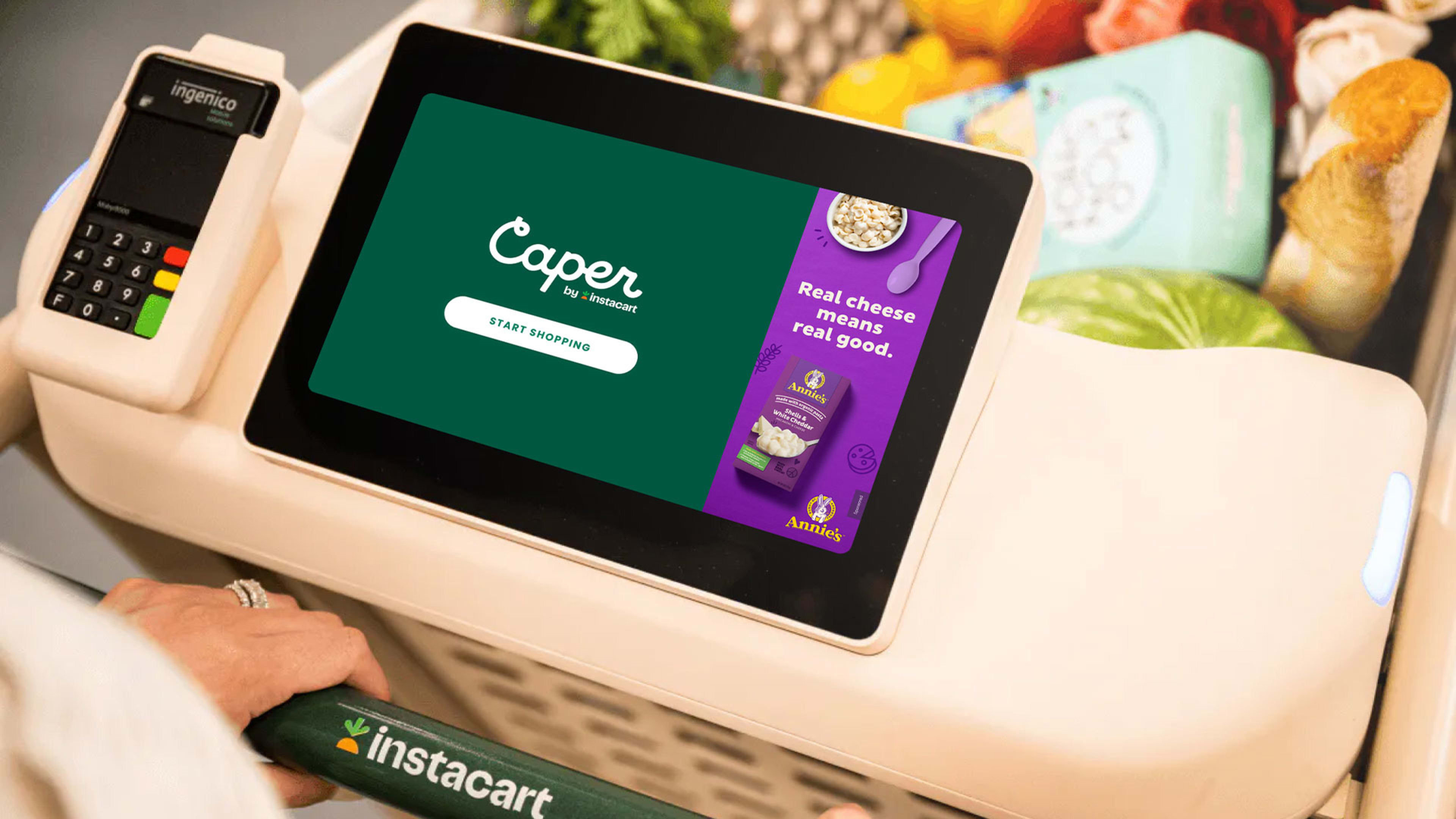Instacart is rolling out ads on its AI-powered shopping carts, the company said Monday. It pushes the grocery delivery company even further into the ever-important, revenue-generating advertising segment that’s bolstered the company’s bottom line.
Instacart will start piloting ads on its Caper Carts at Good Fold Holdings’ Bristol Farms stores in Southern California. Launch partners include Del Monte Foods, Dreyer’s Grand Ice Cream, and General Mills, the company said.
“You can imagine an experience where you are going through the aisles of the store, you drop a box of cookies in your cart and we immediately suggest Dreyer’s ice cream to make ice cream sandwiches with your cookies and we even tell you which aisle you can find this product in,” Instacart CEO Fidji Simo tells Fast Company. “It’s a really rich, personalized, real-time advertising experience but within a store environment.”

Bringing advertising to the smart carts is a natural progression for the grocery tech company. Instacart has been building an extensive advertising business and courting retailers with its in-store shopping technologies as consumers return to brick-and-mortar locations following the pandemic boom.
Part of that push into smart-store tech and software was the company’s 2021 acquisition of Caper AI, which made smart carts and automated checkout technology. A Caper Cart is similarly shaped to standard shopping carts, but is equipped with a touchscreen, scales, and sensors so that customers don’t need to scan items manually. The company in 2022 then launched its Connected Stores offering, a suite of new and existing tech for retailers to make their stores “smart.” That included updated carts, and Instacart has since been getting carts into more stores.
Now, the company is ready for the next step. “We think that ads will fit right in because they’re going to help with discovery of new products,” Simo says.
Instacart plans to expand to additional retail partners in the months ahead. Simo declined to provide how many carts are currently deployed, but said the company expects to have thousands of smart carts in stores by the end of 2024.
Customers will start seeing new products, deals, and seasonal promotions on their cart screens, as well as personalized product recommendations based on real-time shopping behavior.
Simo says the company is starting relatively simple with its rollout. Over time, she says, the company could know which aisles a customer is in without them having to drop anything in the cart and could provide recommendations. Caper Carts also have the ability to integrate stores’ loyalty cards, so Instacart could also analyze past purchases and show personalized items. “It’s a really rich experience that we definitely believe will be the future of grocery shopping,” Simo says.
Instacart has evolved beyond its original gig model to run a thriving ad business, a feat that is echoed in its financial reports. The company, which began its ads segment in 2019, earned $740 million from ads and other revenue in 2022, equaling nearly 30% of its overall revenue. Most recently, after going public, Instacart said in its third-quarter earnings report that advertising & other revenue was $222 million, or 19% year-over-year, partly driven by “ongoing momentum from our initiatives to deliver and demonstrate value to advertisers.”
Recognize your brand’s excellence by applying to this year’s Brands That Matter Awards before the final deadline, June 7.
Sign up for Brands That Matter notifications here.
